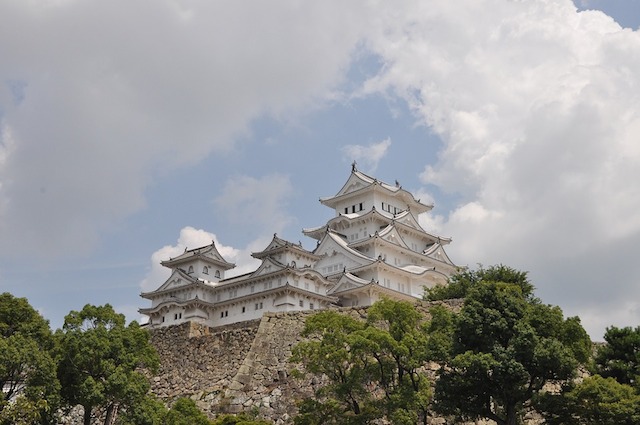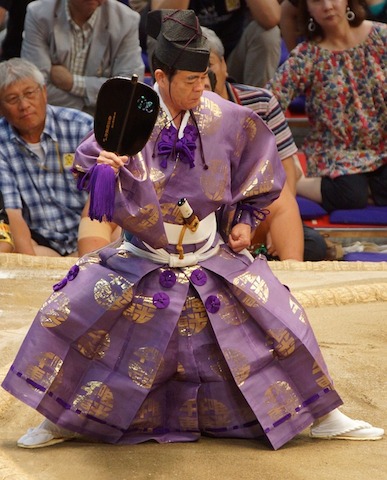What You Want to Know about Sumo Wrestling in Japan

Sumo wrestling is one of the most recognizable and unique aspects of Japanese culture. With its distinct uniform, intimidatingly large athletes, and traditional Shinto rituals, it is a completely different type of athleticism to American sports. That’s why I was eager to attend a tournament of sumo wrestling in Japan, one of six grand tournaments throughout the year.
For the layperson, sumo can initially be confusing and seemingly random. Since the actual fighting can last mere seconds, it’s hard to see the expertise behind the shoves and throws. Before cheering on my favorite rikishi (sumo wrestler) in the stands of the Osaka Prefectural Gymnasium, I was determined to learn the meaning behind every step in a sumo tournament, from before they enter the ring to after the winner walks away with the cash. I thought my interest in sumo would be brief, but as I refreshed my online sumo news at work the following week, I realized I had become an addict.
Contrary to their looks, the average sumo wrestler has a lot more muscle than fat. While they intentionally overeat and bulk up, the best wrestlers are still in control of their bodies. Though sumo wrestlers tend to develop obesity-related diseases after retirement, they are actually quite healthy while they are athletes, as their work relies on their strength and flexibility, making them powerhouses of muscle. Part of what makes sumo wrestling in Japan a unique and exclusive sport is that professional wrestlers must live the life of a sumo wrestler at all times. There are strict rules they must adhere to, including in dress, waking and sleeping hours, and daily tasks (for example, wrestlers are banned from driving their own cars).
I thought my interest in sumo wrestling in Japan would be brief, but as I refreshed my online sumo news at work the following week, I realized I had become an addict.
Becoming overweight is not actually a focus of the sport. In fact, the earliest sumo wrestlers weren’t fat at all. However, since there are no weight divisions, over time the athletes found that the bigger they were, the more they could use their weight to push others out of the dohyo (ring). The lack of weight divisions also explains why you might see David and Goliath-esque scenarios in the matches.
It’s not all about shoving people around, though. The most common way to win a bout is to push an opponent out of the surrounding ring, but competitors can also win by forcing the opponent to touch the ground inside the ring with anything but the soles of their feet. As a result, simply diving full-force at one’s contender is a sure-fire way to end up sprawled face first in the sand. There are actually 82 legal moves in Sumo, such as lifting an opponent up by their belt (their mawashi) to throw them out of the ring, or kicking the opponent’s ankle to make him lose balance.
Almost every action a sumo wrestler takes in the ring has to do with either intimidating their opponent or pleasing the gods.
Though sumo wrestling in Japan is losing its popularity with younger generations, its champions still have celebrity status in Japan. As a result, the sport has inevitably been riddled with controversy and rumors. To an outsider, some of the top-ranked wrestlers look like they’re living in the lap of luxury; signing autographs, taking private coaches, and going to exclusive events. Over the years there have been countless scandals, the most well-known being ties with the yakuza (Japanese mafia), hazing, and rigging matches.
Sumo is also steeped in Shinto traditions. Almost every action a sumo wrestler takes in the ring has to do with either intimidating their opponent or pleasing the gods. For example, they throw giant handfuls of salt into the ring to purify it and to get rid of evil spirits. Before the match begins, they spend a few moments lifting their legs to the side like a sideways split and stomping their feet on the ground. This is meant to stomp away any remaining evil spirits, but it’s also a way for wrestlers to prove just how flexible and strong they are.
Sign up for a FREE online writing workshop here.
The tournaments last 15 days, with each wrestler in one match per day. To move up in the rankings, wrestlers must secure at least eight wins by the end of the tournament. The top ranking wrestlers (yokozuna) are expected to keep winning tournaments after achieving this prestigious ranking. Since they are the only rank that can’t be demoted, they usually retire once they are no longer at peak performance. Right now there are three yokozunas, all from Mongolia, which has made recent sumo tournaments all the more interesting.
There are many ways to get tickets. You can buy them ahead of time online at an English-language website. You can also buy them at convenience stores in Japan and –if you’re looking for the cheapest tickets—on the morning of a tournament day for unreserved seats. Definitely try to buy them at least a few weeks in advance (especially if you’re looking for weekend tickets) as they tend to sell out very quickly. The prices may seem steep, but if you have even a minor interest in sumo or traditional Japan, this experience will definitely pique and deepen your enthusiasm, even long after the final bout has ended.

Photo credits for Watching Sumo Wrestling in Japan by Ariel Annon.








